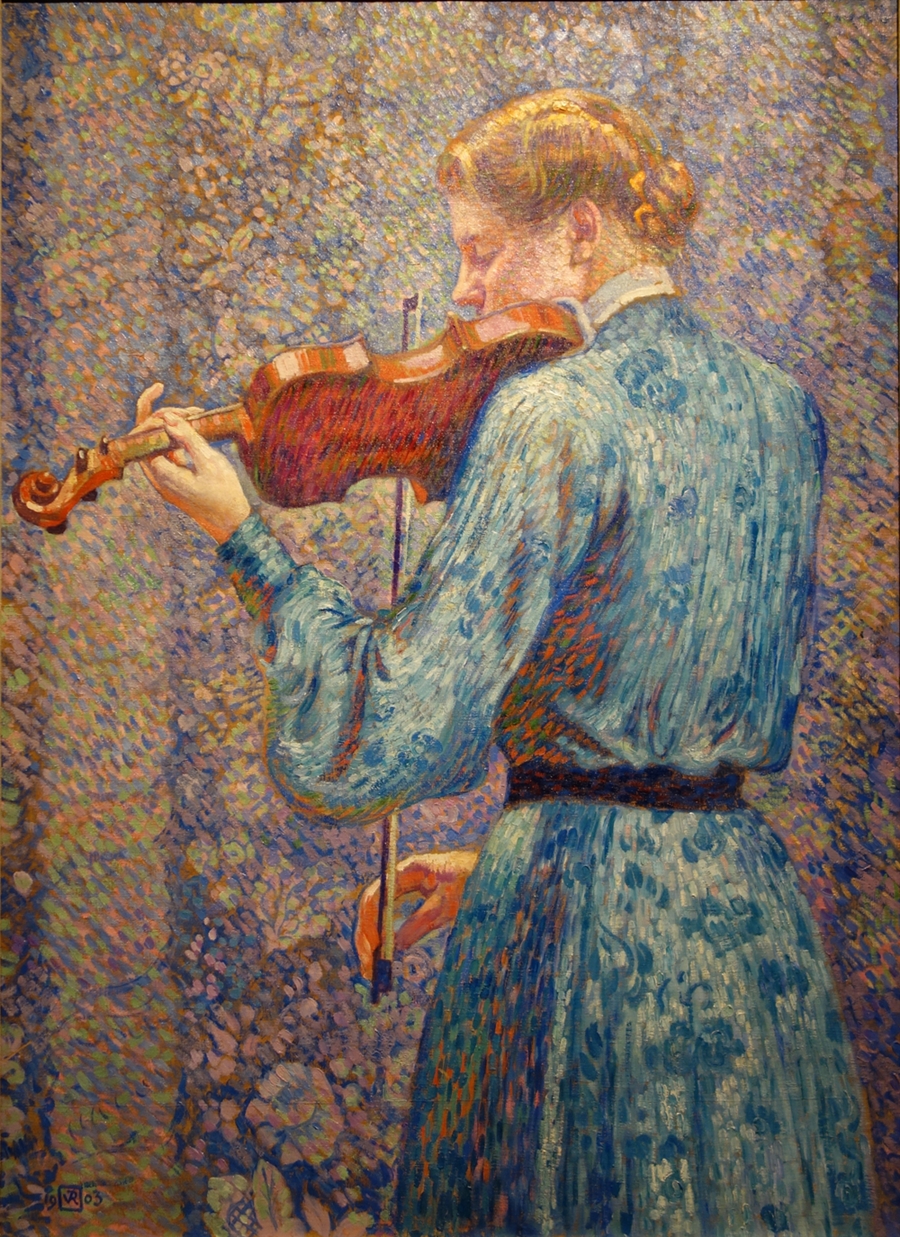To be, or not to be, opening line of a monologue spoken by the character Hamlet in Act III, scene 1, of
William Shakespeare’s revenge tragedy Hamlet (
1599-1601). Often referred to as a soliloquy, the speech technically does not meet that term’s strictest definition -
that is, a monologue delivered by an actor alone onstage - because Ophelia, the object of Hamlet’s fickle affections, is also present, though Hamlet does not speak directly to her until the speech’s very end.
The scene in which "To be, or not to be" appears is sometimes referred to as "the nunnery scene", because Hamlet spurns Ophelia by telling her to "get thee to a nunnery" rather than wed him or another.
William Shakespeare | To be, or not to be
John Everett Millais | Ophelia (
1852) depicts Lady Ophelia's mysterious death by drowning. In the play, the gravediggers discuss whether Ophelia's death was a suicide and whether she merits a Christian burial.
To be, or not to be, that is the question:
Whether 'tis nobler in the mind to suffer
The slings and arrows of outrageous fortune,
Or to take arms against a sea of troubles
And by opposing end them. To die - to sleep,
No more; and by a sleep to say we end
The heart-ache and the thousand natural shocks
That flesh is heir to: 'tis a consummation
Devoutly to be wish'd. To die, to sleep;
To sleep, perchance to dream - ay, there's the rub:
For in that sleep of death what dreams may come,
When we have shuffled off this mortal coil,
Must give us pause - there's the respect
That makes calamity of so long life.
For who would bear the whips and scorns of time,
Th'oppressor's wrong, the proud man's contumely,
The pangs of dispriz'd love, the law's delay,
The insolence of office, and the spurns
That patient merit of th'unworthy takes,
When he himself might his quietus make
With a bare bodkin? Who would fardels bear,
To grunt and sweat under a weary life,
But that the dread of something after death,
The undiscovere'd country, from whose bourn
No traveller returns, puzzles the will,
And makes us rather bear those ills we have
Than fly to others that we know not of?
Thus conscience doth make cowards of us all,
And thus the native hue of resolution
Is sicklied o'er with the pale cast of thought,
And enterprises of great pith and moment
With this regard their currents turn awry
And lose the name of action.
Edwin Austin Abbey | The Play Scene in "
Hamlet" (
Act III, Scene II), 1897 | Yale University Art Gallery
William Shakespeare | Essere o non essere
Essere, o non essere, questo è il dilemma:
se sia più nobile nella mente soffrire
colpi di fionda e dardi d'oltraggiosa fortuna
o prender armi contro un mare d'affanni
e, opponendosi, por loro fine? Morire, dormire…
nient'altro, e con un sonno dire che poniamo fine
al dolore del cuore e ai mille tumulti naturali
di cui è erede la carne: è una conclusione
da desiderarsi devotamente. Morire, dormire.
Benjamin West | Hamlet: Act IV, Scene V (
Ophelia Before the King and Queen), 1792 | Cincinnati Art Museum
Dormire, forse sognare. Sì, qui è l'ostacolo,
perché in quel sonno di morte quali sogni possano venire
dopo che ci siamo cavati di dosso questo groviglio mortale
deve farci riflettere. È questo lo scrupolo
che dà alla sventura una vita così lunga.
Perché chi sopporterebbe le frustate e gli scherni del tempo,
il torto dell'oppressore, l'ingiuria dell'uomo superbo,
gli spasimi dell'amore disprezzato, il ritardo della legge,
l'insolenza delle cariche ufficiali, e il disprezzo
che il merito paziente riceve dagli indegni,
quando egli stesso potrebbe darsi quietanza
con un semplice stiletto? Chi porterebbe fardelli,
grugnendo e sudando sotto il peso di una vita faticosa,
se non fosse che il terrore di qualcosa dopo la morte,
il paese inesplorato dalla cui frontiera
nessun viaggiatore fa ritorno, sconcerta la volontà
e ci fa sopportare i mali che abbiamo
piuttosto che accorrere verso altri che ci sono ignoti?
Così la coscienza ci rende tutti codardi,
e così il colore naturale della risolutezza
è reso malsano dalla pallida cera del pensiero,
e imprese di grande altezza e momento
per questa ragione deviano dal loro corso
e perdono il nome di azione.













.jpg)






.jpg)







.jpg)








.jpg)
.jpg)


